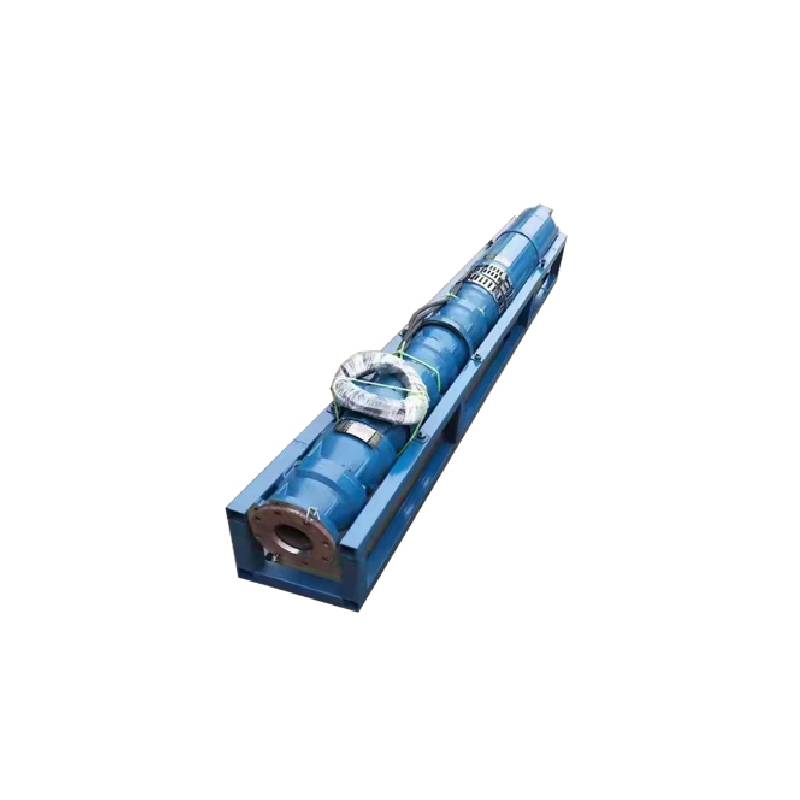Nov . 29, 2024 11:30 Back to list
Understanding the Functionality of Submersible Well Pumps in Water Extraction
How Does a Submersible Well Pump Work?
Submersible well pumps are essential devices used for extracting water from deep underground sources. Unlike traditional pumps, which are situated above ground, submersible pumps operate underwater, making them efficient in a variety of applications, from irrigation systems to municipal water supply. Understanding how these pumps function provides insight into their effectiveness and reliability.
Design and Components
A submersible well pump consists of several key components, including the pump itself, a motor, and a discharge head. The pump is typically cylindrical and designed to be submerged in water within the well. The motor, located at the bottom of the unit, is sealed within a housing that protects it from water damage. The combination of pump and motor is known as a submersible pump unit.
The discharge head, situated above ground, allows water to flow from the pump into pipes that direct the water to where it is needed. This head also helps to protect the pump from environmental factors, such as debris and extreme weather conditions.
How It Works
The operation of a submersible well pump begins when it is submerged in water. The pump draws water into it through intake screens that prevent larger particles and debris from entering. Once inside, the water is moved through a series of impellers, which are rotating blades within the pump.
As the impellers spin, they create centrifugal force, pushing the water outward toward the discharge side of the pump. This process increases the water's pressure and velocity, allowing it to be lifted to the surface. The streamlined design of the pump helps to minimize turbulence, maximizing efficiency.
Once the water exits the pump, it travels through the discharge head and into pipes leading to its destination. The entire process is powered by the electric motor, which is designed to be energy-efficient and capable of functioning at depths where pressure could be significant.
how does a submersible well pump work

Advantages of Submersible Pumps
Submersible well pumps offer several advantages over other types of pumps. One major benefit is their efficiency. Because they are located underwater, they do not need to create a vacuum to draw water up like traditional pumps, thus requiring less energy and reducing operational costs.
Another advantage is their ability to handle large volumes of water. Submersible pumps are capable of servicing wells with significant depths and substantial water requirements, making them suitable for residential, agricultural, and industrial applications.
Additionally, submersible pumps are less prone to damage from environmental factors, as they are protected from elements such as debris, oxygen, and corrosion. This durability can lead to a longer service life compared to above-ground pumps.
Installation and Maintenance
Installing a submersible well pump requires careful planning and execution. A professional should assess the well's depth and water quality before selecting the right pump. Installation involves lowering the pump into the well using a strong cable or pipe, ensuring it is securely positioned at the desired depth.
Maintenance of submersible pumps is generally minimal. However, regular inspections are encouraged to ensure that the motor and pump assembly are functioning correctly. Monitoring factors such as water quality and flow rate can help identify any potential issues before they escalate into larger problems.
Conclusion
Submersible well pumps play a vital role in accessing groundwater. Their unique design allows for efficient water extraction from substantial depths, making them indispensable in various sectors. Understanding how these pumps work, their components, and their advantages enhances appreciation for this essential technology. Whether for a small farm or a large municipal supply, submersible well pumps remain a reliable solution for meeting water needs.
-
Submersible Water Pump: The Efficient 'Power Pioneer' of the Underwater World
NewsJul.01,2025
-
Submersible Pond Pump: The Hidden Guardian of Water Landscape Ecology
NewsJul.01,2025
-
Stainless Well Pump: A Reliable and Durable Pumping Main Force
NewsJul.01,2025
-
Stainless Steel Submersible Pump: An Efficient and Versatile Tool for Underwater Operations
NewsJul.01,2025
-
Deep Well Submersible Pump: An Efficient 'Sucker' of Groundwater Sources
NewsJul.01,2025
-
Deep Water Well Pump: An Efficient 'Sucker' of Groundwater Sources
NewsJul.01,2025
-
 Submersible Water Pump: The Efficient 'Power Pioneer' of the Underwater WorldIn the field of hydraulic equipment, the Submersible Water Pump has become the core equipment for underwater operations and water resource transportation due to its unique design and excellent performance.Detail
Submersible Water Pump: The Efficient 'Power Pioneer' of the Underwater WorldIn the field of hydraulic equipment, the Submersible Water Pump has become the core equipment for underwater operations and water resource transportation due to its unique design and excellent performance.Detail -
 Submersible Pond Pump: The Hidden Guardian of Water Landscape EcologyIn courtyard landscapes, ecological ponds, and even small-scale water conservancy projects, there is a silent yet indispensable equipment - the Submersible Pond Pump.Detail
Submersible Pond Pump: The Hidden Guardian of Water Landscape EcologyIn courtyard landscapes, ecological ponds, and even small-scale water conservancy projects, there is a silent yet indispensable equipment - the Submersible Pond Pump.Detail -
 Stainless Well Pump: A Reliable and Durable Pumping Main ForceIn the field of water resource transportation, Stainless Well Pump has become the core equipment for various pumping scenarios with its excellent performance and reliable quality.Detail
Stainless Well Pump: A Reliable and Durable Pumping Main ForceIn the field of water resource transportation, Stainless Well Pump has become the core equipment for various pumping scenarios with its excellent performance and reliable quality.Detail
